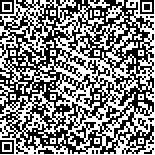| This article has been:Browse 2196Times Download 3860Times |

scan it! |
|
|
| DOI:10.13522/j.cnki.ggps.20180441 |
|
| Water Movement and Its Potential for Uptake by Roots under Plug-in Subsurface Drip Irrigation |
|
WANG Bingyao, WEI Wei, LIU Lichao, WANG Zengru
|
|
1.Northwest Institute of Eco-environment and Resources,Chinese Academy of Science, Lanzhou 730000, China; 2.University of Chinese Academy of Sciences, Beijing 100049, China; 3. Ningxia Agricultural Comprehensive Development Office, Yinchuan 750001, China
|
| Abstract: |
| 【Objective】Plug-in subsurface drip irrigation is an technique able to deliver water and nutrients to desirable root zones. The objective of this paper is to investigate its efficacy in modulating water movement and its subsequent uptake by plant roots. 【Method】The experiment was conducted in a sandy soil and a sandy clay soil, typical in northwest China. During the experiment, we measured advances of the wetting fronts in both vertical and horizontal directions and established their relationship with flow rate and irrigation duration, from which we calculated the parameters in irrigation design.【Result】For both soils, there was a good relationship between wetting-front advance in all directions with flow rate and irrigation duration, with a determinant coefficient of R2 = 0.95. The storage coefficient of the irrigation water, the irrigation uniformity coefficient and soil wetting ratio in the sandy soil were all less than 0.6, while their associated values in the sand clay soil were larger than 0.8, indicating that the plug-in subsurface drip irrigation was less efficient in the sandy soil than in the sandy clay soil. 【Conclusion】The advance of the wetting-front increased with flow rate and irrigation duration in a power-law, with the determinant coefficients being 0.95. The upward advance of the wetting-front was negatively related to the flow rate but positively to the irrigation duration. In contrast, the moving distances of the wetting font in both horizontal and downward vertical direction increased with both flow rate and irrigation duration. In our experiment the flow rate of 1.25 L/h was most effective. |
| Key words: arid area; plug-in subsurface drip irrigation; wetting zone; wetting front; moving distance; micro irrigation parameters |
|
|